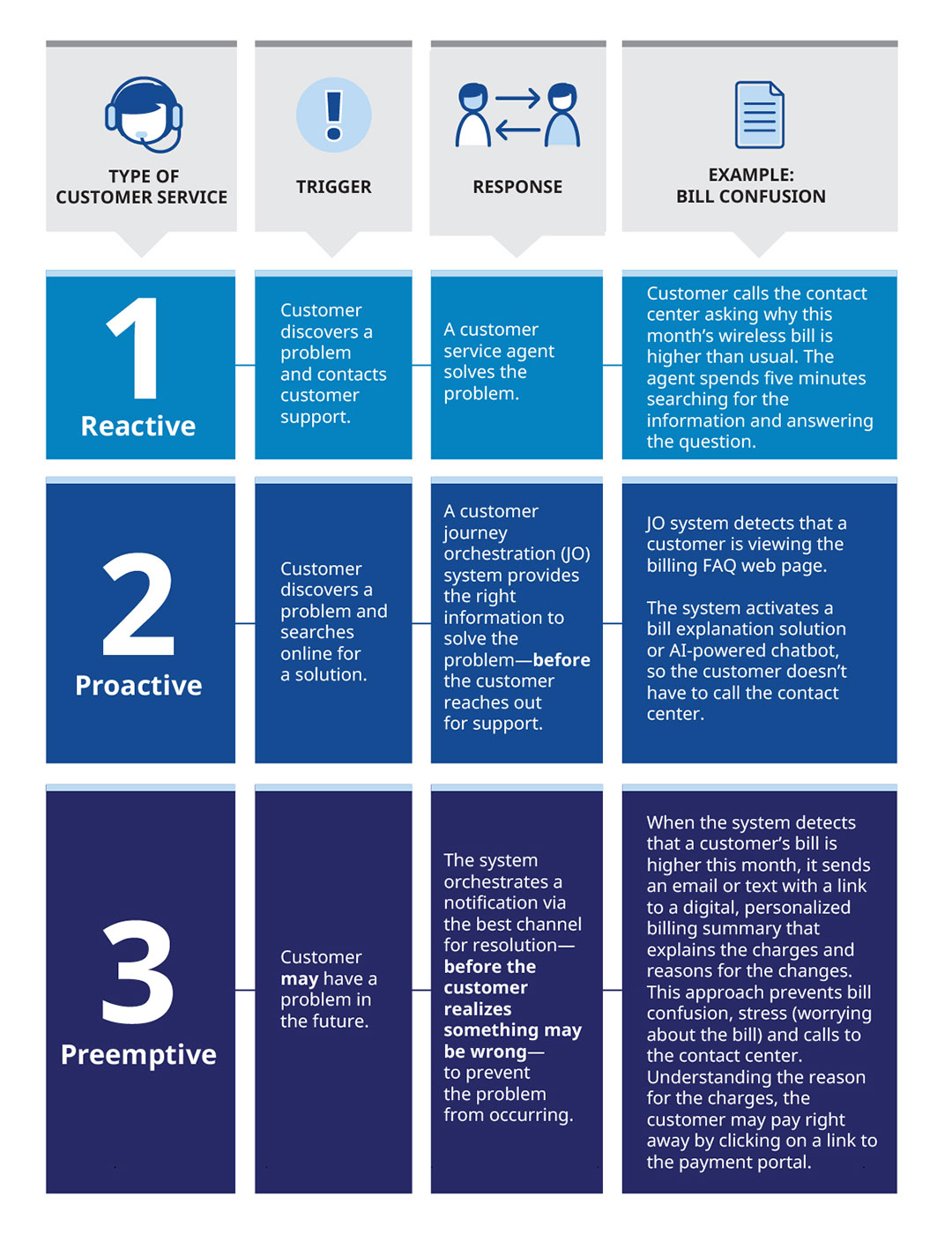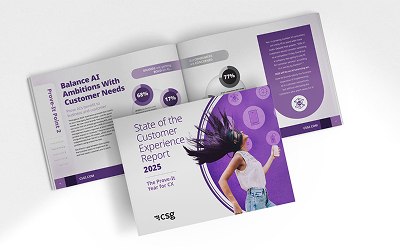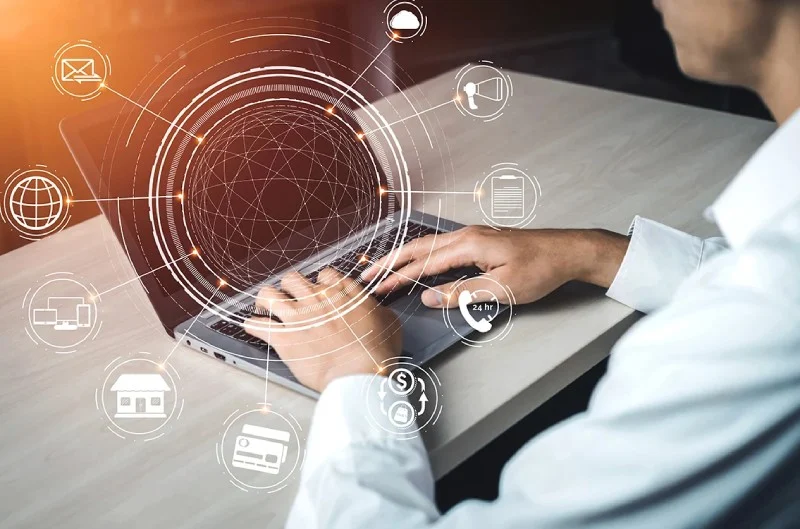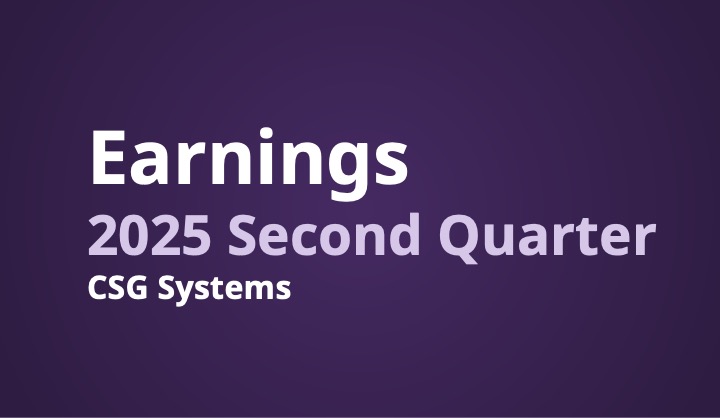An ounce of prevention is worth a pound of cure.
Benjamin Franklin’s words ring true for customer service as well as for health. Customer service quality often makes or breaks customer experience, creating loyal customers or sending them packing. A PwC survey found that 55% of consumers would stop doing business with a brand—even one they liked—after having several bad experiences with them. What that means: The goodwill you’ve built up with a customer across your brand can be undone with just a few missteps in the customer care experience.
Clearly, there’s a lot at stake in the customer care experience when it comes to retention. So much, in fact, that businesses aren’t just looking at the best ways to resolve customers’ needs and issues. They’re looking at how to anticipate and meet those needs through preemptive customer service.
Delivering preemptive customer service is a valuable strategy to boost customer satisfaction and loyalty and reduce contact center calls. With the right strategy and tools, it‘s also easier than it might sound.
Preemptive Customer Service Stops Problems Before They Start
The best way to understand preemptive customer service is to compare it to the other levels: reactive (or traditional) customer service and proactive customer service. Of course, no business can prevent all the issues their customers might experience, so they still need to deliver the best reactive and proactive customer service they can. A strong preemptive customer service strategy, however, helps relieve pressure on those efforts while taking customer loyalty to the next level.
What Does Preemptive Customer Service Look Like?

What Are Some Examples of Preemptive Customer Service?
Service outage notifications. Utility companies or communication service providers (CSPs) can prevent problems by notifying customers—before the fact—of planned maintenance that may affect their service. For example, one CSP gave customers a heads-up that a technician would be working on the cell tower in their neighborhood on a particular date, possibly disrupting wireless service in the area. That advance warning gave customers time to plan accordingly (e.g., work at the office or another location instead of at home). Preemptive service prevented the stress and frustration that would have occurred if the customer discovered the lack of coverage five minutes before a client call.
Multi-channel billing notifications. Sending bills or payment reminders over the communication channels that will reach them the fastest (such as email, SMS, push notifications) increases the likelihood of on-time payment. For example, if a patient misses an email indicating they owe money for a recent medical procedure, the next communication they receive may be from the collection agency. If the hospital billing department sent a payment reminder by text message (the patient’s preferred channel), the patient would be more likely to pay the bill promptly, saving the customer from stress and late fees. And the business would avoid the expense of using a collection agency.
Overdraft alert. Sending a notification regarding potential overdraft on a customer’s account—before the customer is aware of it—prevents a frustrating experience. A simple text message saying, “Your account ending in **** is at risk of overdraft” gives the customer an opportunity to transfer money from their savings account before they get charged with a fee. Without this warning, they might end up calling the contact center to ask why they have a fee, only for the agent to return the money back.
These are fairly common examples of preemptive customer service. They all produce similar benefits—saving customers from frustration and businesses from inbound calls.
How Can You Deliver Preemptive Customer Service?
To deliver preemptive customer service, you need the ability to anticipate customer needs and pivot accordingly. Real-time event detection is a must, as it enables you to observe customer interactions with your brand and adjust communications to meet those needs—sometimes before customers are aware of them.
A customer journey orchestration system uses real-time customer data to analyze current behavior, predict future behavior and send the right messages at the right time via the ideal communication channel. This system allows you to guide customers’ behavior, adjusting the experience in real time to help the customer achieve the desired outcome.
Journey orchestration is the key to taking the insights you have from customer data and behavior, and acting on them. By noticing that a customer’s data usage has recently increased (coming close to exceeding the wireless plan’s data limit), the system recommends an unlimited data plan. This preemptive approach prevents the customer from incurring future overage charges.
Preemptive Customer Service Starts With CSG Xponent
CSG Xponent is an industry-leading customer engagement platform that bridges the gap between customer insights and action. We proactively guide customers through their care experience, offering contextual self-service and knowledgeable support to ensure quick resolutions that build brand trust.











